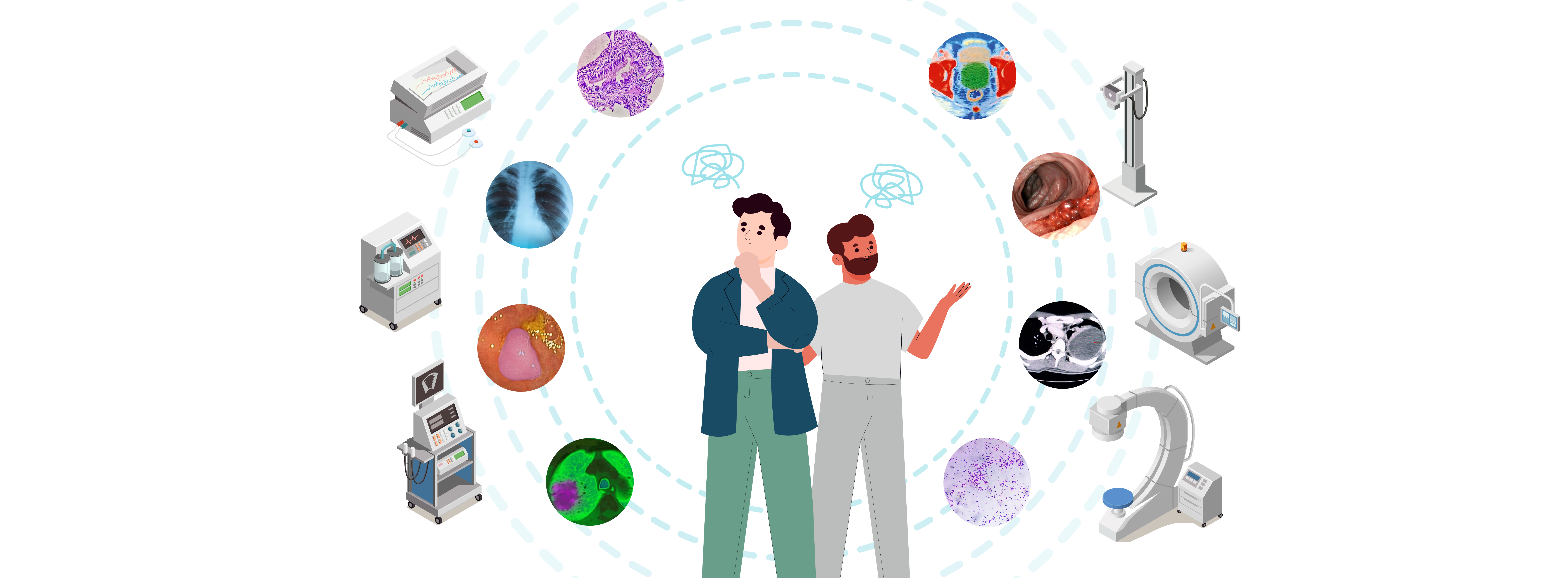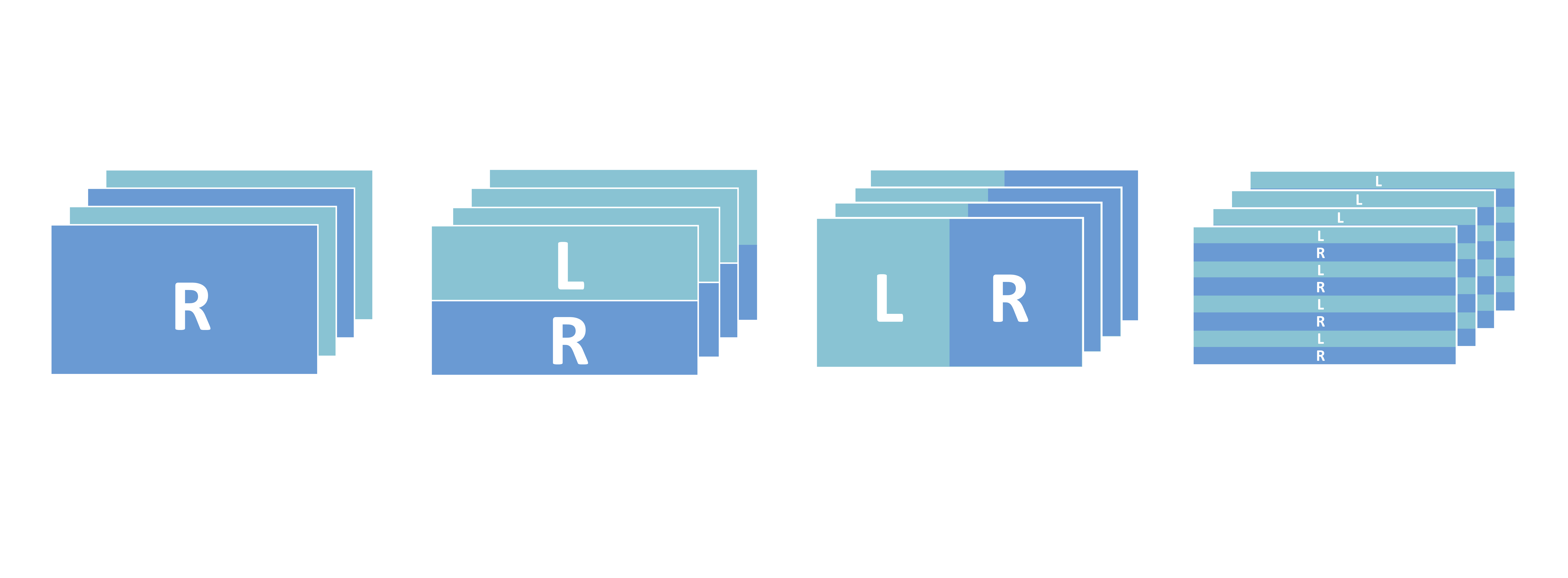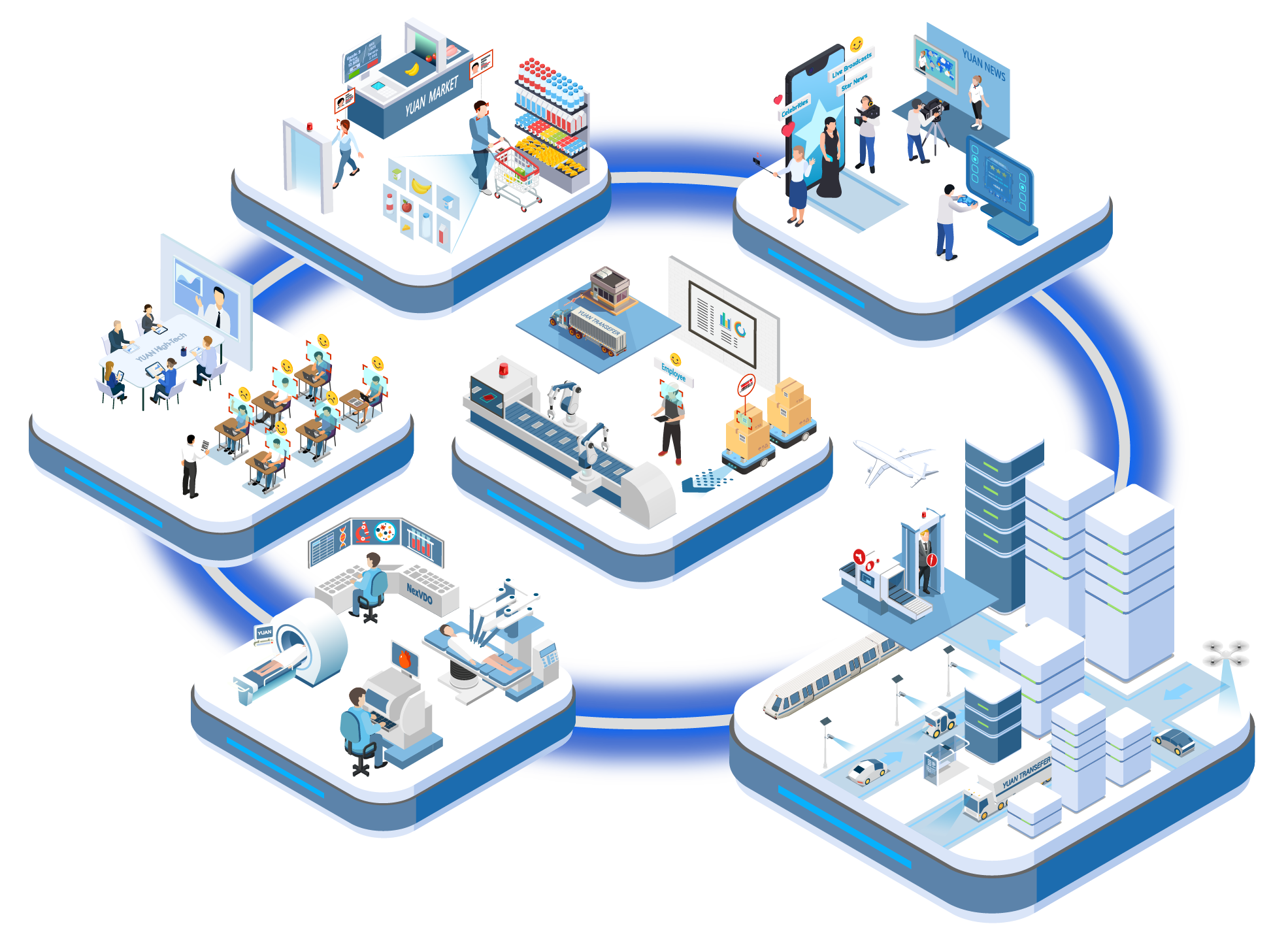AI Medical Workstation
With the rapid development of the medical industry, the equipment configuration of traditional operating rooms gradually failed to meet the needs of surgical work. In the past decade, the rise of the Internet of Things and the significant increase in computer computing power have driven hospitals worldwide to embrace the wave of digital transformation, and precision medicine has begun to become the mainstream direction of medical development in various countries.The integration of video and communication has brought about a more efficient quality of care for healthcare professionals. The construction of an integrated operating room is an essential milestone in this process.
In the past, only a small amount of data was recorded by hand during a patient's surgery. After the surgery, doctors and nurses would each integrate the data and register it in the patient's database, which was scattered and consumed a lot of time for the medical staff. With the advent of the integrated operating room, we can now collect all the data in a single visual medical aid, optimizing the workflow and allocating limited resources.
The core concept of the AI medical workstation is to centrally link the medical equipment and video sources in the operating room together and integrate multiple videos from different equipment on a single interface to facilitate the surgeon's operation. The surgical procedure can be converted into DICOM format and uploaded to the PACS system for case backup, and then transmitted to various remote medical sites in real-time for joint consultations, video teaching, or video conferencing. With the efficient AI medical workstation, the doctor can look at the affected part of a patient at a magnification of 200 times greater than the naked eye. With the 4K ultra-high-definition video capture card, the surgeon no longer has to strain to stare at the patient. The surgery can be recorded in its entirety.
In addition, when an emergency occurs during surgery, medical staff can immediately send distortion-free and low-latency video to the examination room via streaming technology. Reduces the transportation process's risk, and the relevant medical team can quickly assist by video.

Compared with other professional markets, the medical industry has stringent regulations and high professional threshold restrictions, so the construction of a complete set of visual medical workstations, in addition to focusing on lag-free image rendering, ultra-high-resolution, high-performance video recording, and real-time streaming processing capabilities, but also to be able to connect the various types of medical equipment in the hospital, digital storage and integration of information, through a friendly and intuitive interface to help medical staff. It is also essential to connect to various medical devices in the hospital, store and integrate information digitally, and help medical staff simplify their work through a friendly and intuitive interface.

Many industry players are unable to implement the medical system.Not because they are unable to meet the software specifications, but because they are unfamiliar with the imaging requirements of the medical system and the way to interface with various medical devices, and therefore hesitate to enter the medical industry. For software developers in the medical sector, YUAN has compiled the following three common problems encountered in the development of visual medical workstations.
1. The medical types of equipment are becoming more and more high-spec from 2K, 4K, or even 8K ultra-high definition with low latency.
2. Developer is unfamiliar with the communication serial method of the medical system and encounters difficulties in interfacing with the medical system.
3. In the face of new 3D medical procedures, the developer does not know how to integrate 3D technology.
With more than 300 customers in the medical industry, NexVDO SDK has been used for years. In addition to real-time distortion-free image acquisition and compression and efficient multi-stream recording, NexVDO SDK provides three robust solutions to allow software developers to lower the development threshold and significantly reduce time.
8K Ultra HD video processing with low latency
As we know, the clearer the medical image will help doctors decide. The video from 2K resolution to 8K resolution represents a 16-fold increase in precision per unit size. The system can display every inch of subcutaneous microvasculature clearly and losslessly on the screen.With 8K display technology, doctors can perform ultra-precise surgery without wearing a microscope.

The NexVDO SDK supports up to 8K60 uncompressed image acquisition and rendering, and the transfer time from capture to screen can be less than 50 ms. Ai medical workstation can also manage the video by NexVDO SDK to store and backup the data for recording, allowing doctors to treat patients with ultra-high resolution. At the same time, a doctor can transfer the video by appropriate video size for remote teaching.
Medical industry-specific protocols
The standardization process has been complicated for many hospitals in their information systems integration efforts.There are many different types of medical images. All medical image formats are not as standard as JPEG or BMP.The hospital uses the Digital Image Transfer Protocol for Medical Imaging (DICOM) image format standard, which defines file formats and network communication protocols specifically for processing, storing, printing, and transferring medical images.

NexVDO SDK provides video modules for making AI medical workstations.It includes various digital information transfer protocols, such as HL7, DICOM, and Worklist connects to the hospital's PACS Server through DICOM protocols. NexVDO SDK helps developers to create AI medical work efficiently.In addition, with the increasing circulation of the video, the public is also increasingly concerned about privacy security. NexVDO SDK provides the function of video encryption and decryption functions. When the surgical video needs to be played back or transmitted remotely, the user can ask the receiver to do the decoding action, providing additional protection for patients.
Efficient 3D Imaging Technology
Since 2012, the medical introduction of the da Vinci surgical robot, the primary medical material manufacturers have incorporated 3D video technology into the surgical medical equipment. The surgeon can do the surgical operation through the 3D stereoscopic images and the console joystick.
Did you know? Every 36 seconds, the doctor uses the da Vinci surgical robot to assist surgeons in improving their surgical efficiency.The problem is that the medical industry only had 2D images in the past.The lack of depth information allowed doctors to rely on other data to assist in their diagnoses. However, 3D imaging technology is an unfamiliar field for developers, with its image format, rendering method, and coding, and it takes a lot of time to learn to get started!

The NexVDO SDK supports standard modes of 3D adoption, such as L+R / Side by Side / Top-Bottom / Line by Line signal data. It supports 3D image rendering, allowing developers to integrate with front-end VR devices without much effort. We also support 3D encoding H.264 MVC protocol to assist developers in video compression in the recording and streaming formats.NexVDO SDK provides a complete one-stop solution for 3D image acquisition, recording, streaming, playback, and editing, making 3D image processing as efficient and easy as 2D image processing!
Two major applications of AI medical workstation in healthcare
The combination of AI and big data analytics has contributed significantly to video recognition in the medical industry, leading the medical industry to break through many dilemmas. The following are the two hottest NexVDO SDK AI medical workstation applications:
1. Immediate prediction and analysis of disease signs
In the past, doctors had to go back and forth with different departments to analyze a patient's X-ray image for diagnosis. Now, by inputting many images of disease signs and a trained AI model, they can identify and analyze the probability of a tumor in just a few minutes, but it is not real-time.By using the YUAN video capture card, hospitals can integrate AI models directly into the system through the NexVDO SDK to help doctors do the real-time inferential analysis of the disease signs instead of waiting until the patient leaves. If a doctor finds an error in the model during diagnosis, they can manually capture the marker and feed it back to the AI medical workstation.The AI medical workstation allows the model to be retrained and improves medical efficiency through iterative system design.

After the da Vinci surgical robot, the public has more confidence in the precision robotic arm to operate independently. In the movie, you may have seen surgery done by robots. In this world, a group of scientists and medical authorities are developing a spinal surgery navigation system.YUAN is also working with orthopedic hospitals to map the operating surface and surrounding area through 3D cameras and integrate AI medical workstations to compute surgical maps, guiding the robotic arm to accurately and automatically perform complex open surgeries.

The system will combine existing medical services with higher-end imaging technology in the future. In the world of 5G, more accurate patient-centered medical care will increase, assisting patients when they are sick and making quick reminders and predictions. Doctors can break through the geographical limitations and control the surgical robot to operate on the other side of the world.Everyone can expect AI video vision technology will grow in the medical industry!
